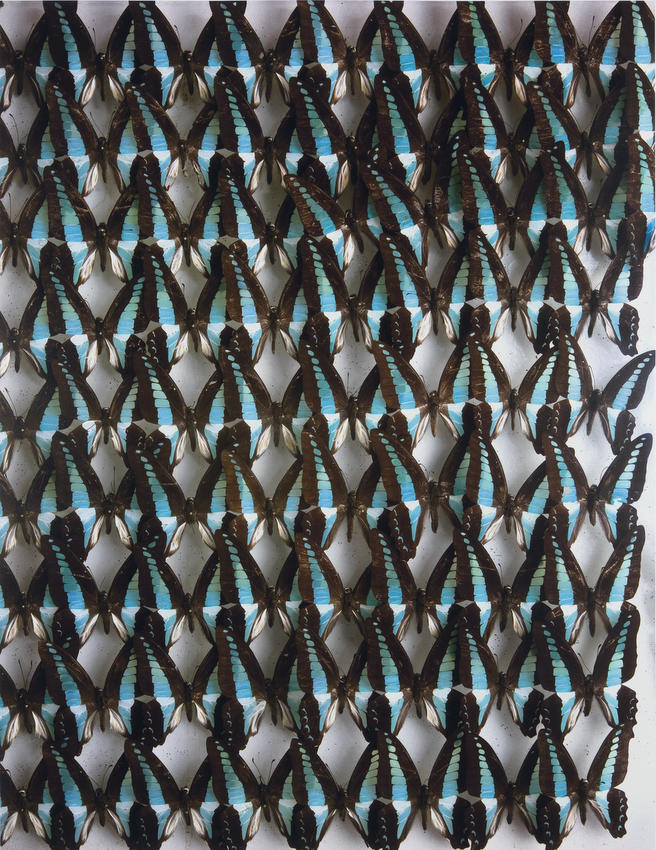We acknowledge the Traditional Owners of the land on which the Queensland Art Gallery | Gallery of Modern Art stands and recognise the creative contribution First Australians make to the art and culture of this country.

Justine Cooper / Australia b.1968 / Blue triangle butterflies (Graphium sarpedon) (from ‘Saved by science’ series) 2004 / Digital colour print on Fuji Crystal Archive Matte paper, ed. 3/8 / 99.2 x 76.2cm / Purchased 2005 / Collection: Queensland Art Gallery | Gallery of Modern Art / © Justine Cooper
Justine CooperBlue triangle butterflies (Graphium sarpedon) 2004
Not Currently on Display
Blue triangle butterflies (Graphium sarpedon) 2004 is a photograph taken by Justine Cooper during a residency at the American Museum of Natural History in New York. Large format photographs, taken with a wooden camera c.1910 from the museum’s own Special Collections, allowed the artist rare glimpses into the vast storage areas and their contents.
The photographs present the stored collections as both an evolution of the collecting and storing process, and as an historical and contemporary perspective on how we systematise and assign value to nature. The blue triangle butterfly is found in South and South-East Asia, as well as eastern Australia.
Justine Cooper was born in Sydney in 1968 and currently resides in New York. Internationally recognised as an interdisciplinary artist, who originally worked in photography, her work now involves animation, video and installation. She is fascinated by the intersections of science and art and how society is affected by these.
In 2004, Cooper was the recipient of the Australia Council New Media Arts Fellowship, a two-year grant awarded to an artist of outstanding artistic achievement and potential. Her works are held in public and private collections in New York, Sydney, Melbourne, and at the Queensland Art Gallery.
Discussion Questions
1. What does this work make you think about and why? What figures/shapes can you see in the artwork?
2. Cooper offers her audience insights into the relationships at play between scientific endeavour and social attitudes. Compare scientific (e.g. biodiversity), economic (e.g. commodity) and cultural (e.g. place and identity) values associated with the preserving, collecting and cataloguing of biological specimens.
Activities
1. Research an endangered species you value. Create a drawing or painting of your chosen species, using repetition. Incorporate the species’ name in the title of your work.
2. The Queensland Government, in conjunction with Wildlife Queensland, are calling for an entomologist (a scientist who studies insects) to construct a research proposal that presents strategies for the preservation of the blue triangle butterfly. Create a poster to generate public interest in the preservation of this species.